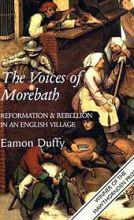


There is no Mass on Good Friday or Holy Saturday, the next one being that of the Easter Vigil. At a suitable time after the Mass the altar is stripped, usually by the sacristan, and crosses are removed from the church, if possible. In the present form of the Roman Rite, as revised in 1955, there is no ceremony of stripping the altar. All altars in the church, except for the altar of repose, are stripped. In the earlier form of the Roman Rite, the stripping of the altar was done at the end of Mass of the Lord's Supper on Maundy Thursday. In Anglican Churches, this ceremony is also performed at the conclusion of Maundy Thursday services, "in which all appointments, linens, and paraments are removed from the altar and chancel in preparation for Good Friday." Ī stripped altar in an Anglican church on Good Friday In addition to the stripping of the altar at the conclusion of the Maundy Thursday liturgy in Lutheran Churches, the "lectern and pulpit are left bare until Easter to symbolize the humiliation and barrenness of the cross." Methodist custom holds that apart from depictions of the Stations of the Cross, other images (such as the altar cross) continue the Lenten habitude of being veiled. Īt the end of the Maundy Thursday liturgy in Methodist parishes, the chancel is traditionally stripped black paraments are sometimes added for Good Friday as black is the liturgical colour of Good Friday in the Methodist Churches.

The Stripping of the Altar or the Stripping of the Chancel is a ceremony carried out in many Anglican, Catholic, Lutheran and Methodist churches on Maundy Thursday. A wooden cross sits in front of the bare chancel for the veneration of the cross ceremony, which occurs during the United Methodist Good Friday liturgy.

On Maundy Thursday, the altar of this Methodist church was stripped and the cross of this Methodist church was veiled in black for Good Friday (black is the liturgical colour for Good Friday in the United Methodist Church).


 0 kommentar(er)
0 kommentar(er)
